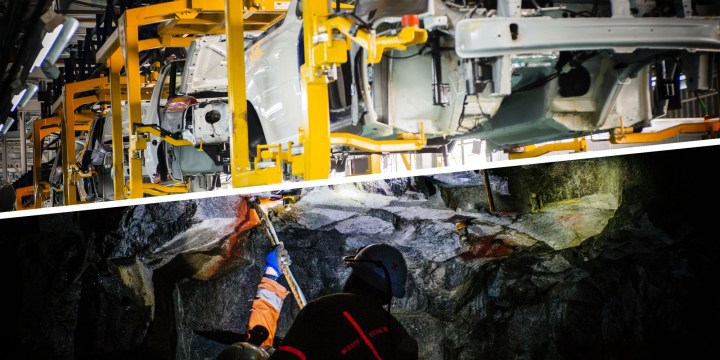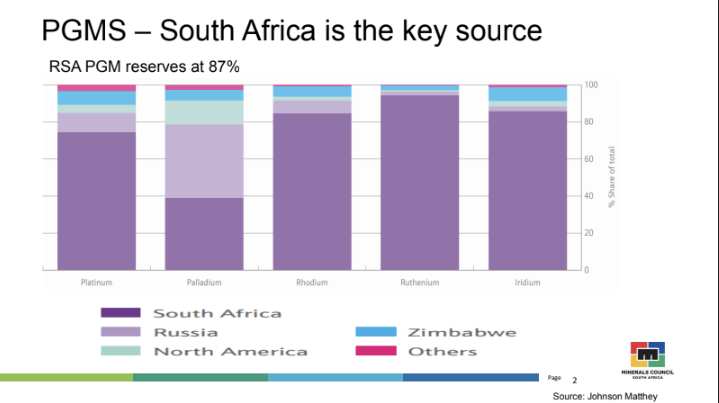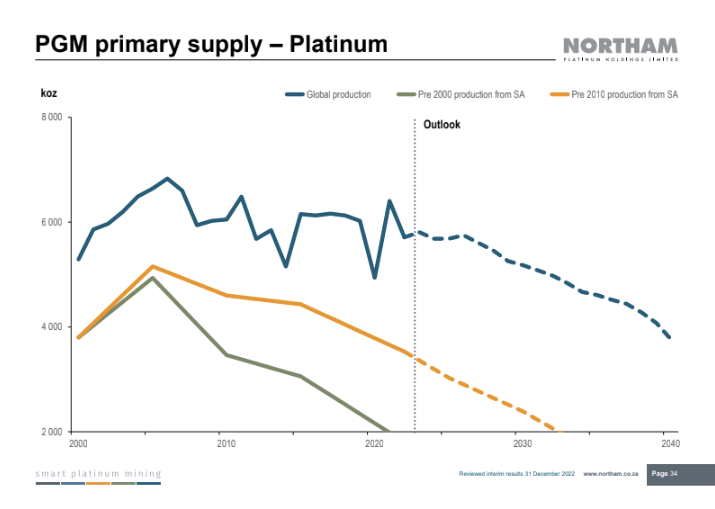Platinum Industry
R8-trillion question: Unlocking South Africa’s PGM potential

It's an R8-trillion question: how to continue unlocking the massive potential of South Africa's platinum group metals (PGM) industry.
“The focus is to realize the world’s largest PGM resource through developing markets, that enable the growth of the PGM mining sector. This would add about R8-trillion to South Africa’s economy by 2050, and about another 1 million direct and indirect jobs,” Roger Baxter, the CEO of the Minerals Council SA, said in a presentation at the PGMs Industry Day organised by Resources 4 Africa in Johannesburg on 28 March.
Any economic or business forecast that extends to 2050 needs to be taken with a massive pinch of salt. But even with uncertainty around long-term forecasts for PGM demand and its future role in the global economy, two things are gin clear.
First, PGMs are “green metals” that will be needed for the green energy transition. “Green metals” is a new term of art that has emerged because of decarbonisation efforts to arrest the climate change linked to fossil fuel usage. It speaks to the simple – and for many ironic – fact that this transition will not be possible without mining.
One of the primary uses for PGMs in the global economy since the 1970s has been as autocatalysts that transform exhaust gases from hydrocarbons and carbon monoxide into less harmful gases.

They have been the key ingredient in capping emissions from automobiles, their usage driven by regulations such as the US Clean Air Act signed into law in 1970 by Richard Nixon – another age when even Republican presidents took the science around environmental issues seriously.
Such initiatives were initially aimed at smog and air pollution and as the Minerals Council’s presentation noted, particulate emissions from one car sold in the early 1970s would be equivalent to that of 100 cars sold in 2021 – effectively a 99% reduction that PGMs were in large part responsible for.
Still, vehicle transportation remains a key source of greenhouse gas emissions. According the US Environmental Protection Agency (EPA) (also a Nixon creation), transportation in 2020 accounted for 27% of such emissions in the US.
On the energy transition front, PGMs are seen playing a range of roles. They are a critical component of green hydrogen made in electrolysers via renewable energy, which are key to decarbonising heavy industry and everyday activities involving household appliances.
“PGMs are already playing a crucial and growing role in the global energy transition to net zero. At least 30 countries have developed or are developing hydrogen strategies towards decarbonising their economies,” Baxter noted in his presentation.
“The combination of green hydrogen displacing natural gas, and fuel cell electric vehicles (FCEV) displacing internal combustion engine vehicles could result in net carbon dioxide savings of up to 11% of the Paris Agreement’s 2030 targets. Annual platinum demand in 2030 from FCEVs and electrolysers of between 1.6 million ounces and 2.4 million ounces provides a growth opportunity for South Africa – the biggest source of primary platinum – of between 34% and 51% by 2030 from the current base of 4.7 million ounces.”

PGMs are also needed for hydrogen fuel cells, a clean way of delivering power. And PGM-based proton exchange membrane (PEM) technology can use renewable energy such as solar.
There are just a few examples and it may also be the case that obituaries about the internal combustion engine are premature.
The second point is that the future of PGM supply, like the past, will hinge on South Africa. No other country comes close. South Africa accounts for 87% of the world’s known PGM reserves. Russia is a key player when it comes to palladium, but across the rest of the PGM curve, South Africa rules the roost.
This also means that maintaining healthy global demand for PGMs well into the future is critical for the South African economy.
At Northam Platinum’s recent interim results presentation, the company’s CEO Paul Dunne displayed a series of graphs showing the company’s long-term outlook for PGM supplies. Global platinum and rhodium production are both seen sharply falling by 2040 from current levels, while palladium may hold up because of Russia.
That means that the potential future demand linked to decarbonisation efforts may not be met.
A cynic might note that the industry has a vested interest in talking up its book and flagging shortages, which over the long run will support the price of its product.
But it’s also true that as far as geologists can tell, South Africa remains the source for PGMs. No mother lode is expected to be unearthed in Malawi or Utah.
And mining in South Africa is a very risky business. Having said that, some risks have receded.
The often violent labour ructions of the past decade have cooled and all of the major PGM producers in South Africa currently have wage agreements of up to five years in place. Social unrest and protests directly impacting PGM operations have also been on the wane the past few months.
But who knows how long that will hold as the economy flatlines and contracts in the face of monumental state failure. Rising poverty, unemployment and inequality are a socially combustible combination. And future production will be increasingly mechanised, automated and even digitised – trends which raises questions about forecasts regarding job creation from PGMs.
Meanwhile, the sector is grappling with a crime wave. Sibanye-Stillwater says that its PGM operations lost R1billion in production last year to copper cable theft alone. All mining sectors are being robbed and even extorted by organised criminal syndicates and mining executives have been assassinated. And policy uncertainty remains rife while the Department of Mineral Resources and Energy is widely regarded as dysfunctional and corrupt. But at least it is finally tendering for a proper mining cadastre and licensing system after years of delays.
This correspondent spoke to a couple of asset managers from overseas at the PGM Industry Day and they were basically like “you would have to be crazy to invest in this mining sector.”
And foreign investment is crucial for South Africa’s mining sector, not least because domestic savings rates remain woefully low.
A lot is at stake here, including a potential R8-trillion shot into the veins of an ailing economy. DM168


















 Become an Insider
Become an Insider
Comments - Please login in order to comment.